Member Login
E-mail: ISTM@ISTM.org
Office hours: Monday - Friday, 9.00 - 17.00 EDT (UTC-04)
January 2010

ISTM News
Position Available: Journal of Travel Medicine
Due to the retirement of the incumbent Editor in May 2011, the Publications Committee of the International Society of Travel Medicine is soliciting interest in the position of Editor-in-Chief of the Journal of Travel Medicine. Candidates who are considered seriously for the position by the Executive Board will eventually be expected to disclose fully any potential conflicts of interest that might impact their impartiality.
Ideal Qualifications:
- Prolonged experience and knowledge of travel medicine, the International Society of Travel Medicine, and the Journal of Travel Medicine
- Stature as a travel medicine researcher as demonstrated by peer-reviewed high impact publications
- High professional stature within the field of travel medicine
- Previous experience on editorial boards of peer-reviewed journals
- Lack of any substantial and/or ongoing conflicts of interest with advertisers or commercial entities that might compromise an editor's ability to judge submissions impartially
- Stature and ability to represent JTM professionally and confidently to industry partners
- Demonstrated reputation for the highest personal ethical standards
- Ability to be detail-oriented
- Technical knowledge to oversee and negotiate with the journal publisher the updating of web-based manuscript management systems
Expectations:
- Production of 6 or more issues of JTM per year per publishers established deadlines
- Timely decisions on submitted manuscripts
- Maintenance of good relations with JTM authors
- Strong efforts to increase the JTM ISI impact factor
- Fiscal discipline to produce JTM at no net cost to ISTM and preferably with a surplus
Personnel support for the Editorial office will be provided. Preliminary inquiries to the Chair of the ISTM Publications Committee, Charles D. Ericsson, MD at charles.d.ericsson@uth.tmc.edu, are encouraged. Applicants should submit a Curriculum vita, a statement of qualifications and a vision statement for the JTM to istm@istm.org. Applications close March 15, 2010. The successful candidate will be expected to begin transition duties in October 2010.
Report of the Publications Committee
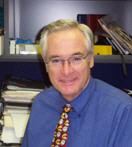 The Publications Committee had a teleconference recently in which we discussed at length the concept of ethical review of articles submitted to JTM by authors employed by industry, and of supplements sponsored by industry. This review process will be presented to the Executive Board for approval. The process aims to insure that reviewers with no conflicts of interest, including at least one reviewer from the editorial board, address a list of ethical issues for each such submission. These safeguards are designed to protect the Editor-in-Chief from conflicts of interest. While the ethical reviews will help guide the Editor-in-Chief, the plan also calls for any lack of total consensus in the final decision to be arbitrated by the executive board.
The Publications Committee had a teleconference recently in which we discussed at length the concept of ethical review of articles submitted to JTM by authors employed by industry, and of supplements sponsored by industry. This review process will be presented to the Executive Board for approval. The process aims to insure that reviewers with no conflicts of interest, including at least one reviewer from the editorial board, address a list of ethical issues for each such submission. These safeguards are designed to protect the Editor-in-Chief from conflicts of interest. While the ethical reviews will help guide the Editor-in-Chief, the plan also calls for any lack of total consensus in the final decision to be arbitrated by the executive board.
Our contract with Wiley Blackwell is coming up for possible renewal. A select committee chaired by David Freedman has been considering the process and hopes to meet with our publisher soon. In that regard I would like to give special thanks to Elaine Musgrave, our Wiley Blackwell contact who has been incredibly responsive and engaged on behalf of JTM ,
Keep those articles coming.
Respectfully submitted,
Charles D. Ericsson, MD
Chair, ISTM Publications Committee
Report of the Nurse Professional Group: Nurses and Nursing Issues in the News

Jane Chiodini
Jane Chiodini (UK): janechiodini@btinternet.com
Sandra Grieve (UK): awcg1@btinternet.com
Gail Rosselot (US): garosselot@aol.com
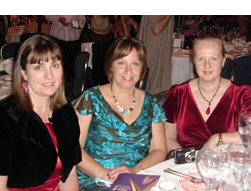
Award winners Yvonne Stephenson
and Karen Olorenshaw with Margaret Umeed

The winning MASTA Team
The United Kingdom (UK)
Every year the Nursing Standard (NS) a nursing journal in the UK, sponsors a Nurse Awards initiative to recognise and celebrate excellence in nursing. In 2009 there were fifteen categories, showing the range and diversity of nursing within the UK. A record number of submissions and nominations gave the judging panel, chaired by the President of the Royal College of Nursing (RCN) Maura Buchanan, a difficult task. Candidates were short-listed and interviewed and one winner selected from each category. From this selection a category overall winner was chosen and from those one was crowned "NS Nurse of the Year 2009."
Recently a travel health category has been added to the Nursing Standard initiative. The first winners of this new category were the nurse advisors from Medical Advisory Service for Travellers Abroad (MASTA), a team of four nurses who developed a new and comprehensive health brief for travellers and health professionals. Their health brief was based on the latest evidence, tailored to the individual traveller and sent by email. The judges praised "the dedication, determination and commitment of the category finalists in improving the care and treatment of their patients" (see photograph). Two nurses who work in General Practice in Warwickshire received commendations. They introduced a risk-assessment process, started a monthly Saturday clinic and raised immunisation awareness among travellers and agents. The Awards were presented at a special ceremony at the Dorchester Hotel in central London (see www.nurseawards.co.uk).
Report from The Faculty of Travel Medicine (FTM) Royal College of Physicians and Surgeons of Glasgow (RCPSG)
Following Elections for places on the FTM (RCPSG) Executive Board (EB), Jane Chiodini (Chair of NPG) was elected and appointed Honorary Secretary of FTM. Jane's wealth of experience in several areas of travel health practice will be an asset to the College and the Faculty EB.
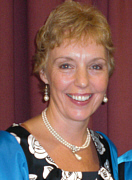 Norway
Norway
The Norwegian Forum for Travel Medicine and the Prevention of Infectious Diseases (NFTM) was founded in 1993 and consists of a group of doctors, nurses and pharmacists who are engaged in travel medicine. Most of the members are nurses who are strongly involved in travel medicine. In August 2009, a member of ISTM NPG, Randi Hammer Boge, was elected leader of the NFTM group and is the first nurse and woman to hold the post. NFTM's aim is to increase knowledge in travel medicine and the prevention of infectious diseases according to national and international guidelines, to support members' interest and to respond to questions related to Travel Medicine.
Canada. Immunization Competencies for Health Professionals; a Canadian Perspective.
Administering immunizations is becoming more complicated. Reasons for this include frequent changes in routine schedules, new vaccines with altered risk/ benefit profiles, increased medico-legal requirements, more cautious and demanding consumers, and a desire to improve the quality of immunization practices. These issues have led to the development of a handbook of Immunization Competencies for Health Professionals, published in Canada in November 2008.
The competencies were developed by a pan-Canadian committee comprising immunization experts, health professional educators, licensing bodies, professional societies, and vaccine regulators and manufacturers. Fourteen competencies were identified ranging from knowledge of the scientific basis of immunization to essential immunization practices and contextual issues relevant to immunization. A series of learning objectives is linked with each competency. Here is an example of a competency and two of its five associated learning activities.
Competency: Anticipates, identifies, and manages adverse events following immunization, as appropriate to the practice setting.
Learning Objectives:
- Use reliable, evidence-based resources to list frequencies of the common, uncommon and rare adverse events associated with vaccines.
- Draft an effective step-by-step response to anaphylaxis.
The primary aims of the competencies are to promote safe and competent practices and improve protection against vaccine-preventable diseases by broadening immunization coverage.
The competencies can be used in the travel medicine setting to:
- Set practice standards
- Guide orientation of new employees
- Target continuing education programs
- Assist health professionals to identify their learning needs
- Select learning opportunities that address the immunization competencies
Throughout Canada, health jurisdictions are developing, fine-tuning, and implementing immunization competency programs to address the competencies identified in the handbook. Moreover, those providing immunisation services have largely embraced the opportunity to identify and address their learning needs in a more formal and structured fashion and have reported that working through such programs helps them feel more confident about their practice.
A copy of the Immunization Competencies for Health Professionals can be accessed here: www.phac-aspc.gc.ca/im/ic-ci-eng.php.
United States
The American Travel Health Nurses Association (ATHNA) has expanded its web site to include the "ATHNA Toolkit." In this new section at www.ATHNA.org, nurses will find useful resources for pre-travel assessment and care. The first tool on the site is Part I of a Pre-travel Assessment Form. This form is a prototype that may be adapted and refined for use in many different pre-travel settings. It has been designed to maximize efficiency and can be completed by the traveler. It can also be sent by fax or email to the traveler in advance of the visit. Part II - to be completed by the nurse - will be published on the site in January 2010.
Also on the ATHNA web site is The Scope of Practice and Standards for Travel Health Nursing in the United States. This three-part document includes:
- Scope of Practice of Travel Health Nursing,
- Standards for Travel Health Nursing Practice, and
- Standards for Travel Health Nursing Professional Performance.
The document has been in development for more than two years and has undergone extensive peer review. It is written in accordance with the guidelines and language of the American Nurses Association and can serve as a tool for role delineation, training, quality assurance, research, and the growth of professional travel health nursing in the United States.
Sandra Grieve, on behalf of ISTM NPG, December 2009
New ISTM Interest Group Being Formed: The psychological health of travellers
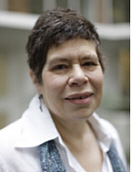
 How often, when you see a patient, do you think, "There is something more to this than just the physical"? The psychological health of travellers is an important but, somehow, an often neglected area. There was quite a bit of interest expressed by the audience when Ted Lankester spoke at ISTM 11 in Budapest about Mental Health and Culture Shock in Long Term Travellers. This gave us the idea of a special interest group among ISTM members to share ideas, experiences, questions, and maybe, in time, research plans regarding the mental health of travellers.
How often, when you see a patient, do you think, "There is something more to this than just the physical"? The psychological health of travellers is an important but, somehow, an often neglected area. There was quite a bit of interest expressed by the audience when Ted Lankester spoke at ISTM 11 in Budapest about Mental Health and Culture Shock in Long Term Travellers. This gave us the idea of a special interest group among ISTM members to share ideas, experiences, questions, and maybe, in time, research plans regarding the mental health of travellers.
You do not have to be a mental health professional to be part of this group; all that is required is an interest in the psychological issues of travel and willingness to take a whole-person approach - whatever your specialty. How people think and feel influences much of their well-being, both when they travel and when they return from their travels. This is territory well worth exploring. Travel is stressful and though for many that is part of the pleasure, for others it triggers psychological problems. Not only individuals but also families are affected even if only one member of the family travels; if children travel there are psychological implications for them too.
So, if this is something you would like to be part of, then please sign up on the ISTM website and we will be in touch with you. All ideas for the group's activities are welcome - this is the first stage so an opportunity to help shape the group!
Evelyn Sharpe [Psychiatrist]
Ted Lankester [Physician]
United Kingdom
Participate in ISTM programs
ISTM offers three types of volunteer activities for members to become active within the organization, network with their colleagues and contribute to the field.
ISTM Standing Committees
ISTM Standing Committees support ISTM activities and projects. They are chartered and tasked by the Executive Board following established guidelines. Current ISTM Standing Committees include:
- The Examination Committee, which designs and administers the ISTM Certificate of Knowledge program
- The Liaison Committee, established to coordinate the relations of ISTM with other related organizations
- The Professional Education and Training Committee, which produces educational programs and materials, including the Teaching Slide Set, the Expert Opinions and more
- The Publications Committee, which is responsible for the Journal of Travel Medicine, NewsShare and the Website
- The Public Affairs Committee, responsible for media outreach and managing communication to the general public
- The Research and Awards Committee, responsible for granting the Travel Awards to CISTM Presenters and Research Grants.
ISTM Professional Groups
ISTM Professional Groups are self-organized groups of 50 or more non-physician members with a common professional degree. ISTM Professional Groups also share information of interest, produce educational materials, have special gatherings during ISTM meetings, and promote the communication of professionals in travel medicine around the world. ISTM Professional Groups currently include:
- Nursing
- Pharmacy
ISTM Interest Groups
ISTM Interest Groups are self-organized groups of 25 or more members with a common professional interest usually pertaining to a single sub-group of travelers or a single issue affecting large groups of travelers. ISTM Interest Groups conduct research, share information, produce educational materials and develop training opportunities. Current proposed ISTM Interest Groups include:
- Destinations Communities Support Interest Group
- Migrants and Refugees Health Interest Group, and
- Psychological Health of Travelers Interest Group
ISTM Public Affairs Committee
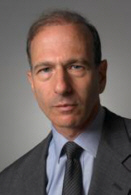 The Public Affairs Standing Committee (PAC) has recently been established. The charter states: Prepare and maintain non-branded "boilerplate" media items on common travel topics for use by ISTM members in dealing with local media enquiries
The Public Affairs Standing Committee (PAC) has recently been established. The charter states: Prepare and maintain non-branded "boilerplate" media items on common travel topics for use by ISTM members in dealing with local media enquiries
- Preparing and maintaining a public "frequently asked questions" section on the ISTM website designed to drive the public to seek advice (e.g., at ISTM Member Clinics)
- Prepare and maintain a contact list of those who have been trained to speak to the press on behalf of ISTM
Members
- Chair: Bradley A. Connor, USA
- Santanu Chatterjee, India
- Gary Fujimoto, USA
- David Hamer, USA
- Jay Keystone, Canada
- Karl Neumann, USA
- Tomas Orduna, Argentina
The Committee encourages ISTM members interested in joining the committee to contact the ISTM Secretariat with a statement of their qualifications and availability to provide voluntary service time to ISTM.
Background information and vision from Brad Connor, the Chair of PAC:
I have reviewed the PAC charter and in addition to the elements described in it have several additional ideas that I believe will increase awareness of the ISTM and Travel Medicine in general. Historically our best efforts at publicity have centered on the North American audience; however, as the ISTM is truly a global organization, I would like to appoint a co-chair from Europe and have several regional representatives on the committee from various other parts of the world. I envision Public Affairs as a combination of "push" and "pull", "push" being preparing informational pieces and going to the press and media with our message, "pull" being answering media inquiries.
To this end I would prepare and maintain a contact list for those who have been trained to speak to the press on behalf of the ISTM. Although including known senior spokespersons from ISTM leadership, I would hope to draw on many of our members who have not had a public voice in the past. There are certain rules that would be necessary in order to represent the ISTM and these would need to be made clear by way of an informational bulletin prior to being "certified" as a spokesperson on behalf of the ISTM.
In Memoriam
GARY ROBERT PODOLSKY
GARY ROBERT PODOLSKY, MD of Winnipeg, Manitoba, Canada, died unexpectedly on October 24, 2009, while on a trip to Los Angeles.
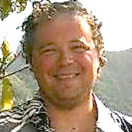 Gary was a long time, active member of the ISTM and very dedicated to our Society. He was a frequent contributor to NewsShare and always eager and able to help out on special projects. At the time of his death he was working on a manual for physicians serving on cruise ships.
Gary was a long time, active member of the ISTM and very dedicated to our Society. He was a frequent contributor to NewsShare and always eager and able to help out on special projects. At the time of his death he was working on a manual for physicians serving on cruise ships.
Gary will be missed not only by his family but also by his team at the Skylark Medical Clinic as well as by his patients.
According to the obituary notice in the Winnipeg Free Press, Gary was the "go-to person" for travelers in the region, a caring and devoted physician. He was a graduate of the University of Manitoba School of Medicine and had worked at various clinics in Winnipeg before opening a practice of his own. Even then, he still helped out at other clinics and made visits to Churchill in the far north of Manitoba to provide his services when needed. Gary had worked for Carnival Cruise Lines as a medical officer on many cruises. He also worked as an expedition doctor in Nepal and Tibet and as a civilian physician with the Canadian Air Force. And he found time to accompany patients on medical evacuations to and from Canada.
Gary's passions covered many areas and he lived life to the fullest, travelling the world, learning foreign languages, painting, and taking many different classes in anything that interested him. Gary was also an avid reader, devouring books and enjoyed writing. He wrote articles, books, and was a regular travel writer for the Winnipeg Sun. Gary enjoyed spending his time with family and never missed an occasion to celebrate with them.
According to his family, his departure leaves a deep void in their hearts and they will miss him dearly. From the many emails, phone calls, and messages on Facebook, they realize that his life touched many people and that his selfless contributions to others will be missed. Donations in his honor may be made in Gary's memory to the HealthBridge Foundation of Canada (www.healthbridge.ca or to the Canadian Juvenile Diabetes Association.
Royal College of Physicians and Surgeons of Glasgow (RCPSG)
Faculty of Travel Medicine Symposium
Communicating the Message. The RCPSG annual symposium of the Faculty of Travel Medicine (FTM) was held in Glasgow, Scotland on 6 October. The Dean of the Faculty, Dr Eric Walker, introduced the proceedings, referring to the title Communicating the Message and looking back at the history of Travel Medicine and how ways of communication have altered over the past century. He emphasised the programme's communication focus based on the way the electronic era is influencing daily life in general and medical practice in particular.
Working with asylum seekers and refugees. Nurse Ann McDonald, who works with asylum seekers and refugee communities in Glasgow, addressed trans-cultural communication. She began by explaining the difference between the two distinct groups and what methods were used in her work to communicate messages. (A person's refugee status remains until they officially apply for asylum in a given country.) In the UK approximately 140 asylum seekers are dispersed by The Home Office through London to Glasgow every month. Around 104 nationalities speaking 86 different languages (majority from African Nations) are cared for. The Scottish Induction Services involved in the process provided a judicial process, screening, interview and a core briefing from the Scottish Refugee Council. Also provided is education for their children aged 5-16 years, housing, language schools and referral to Health Services. Appointment cards are produced in 17 languages. These cards also help gauge literacy. Many applicants have no documentation, birth certificate or passport. Twelve percent of UK asylum claims are from children under 18 years.
The Global Model of Care was adopted in Glasgow; Geography, Language, Orientation, Belief systems, Asylum Process, Local communities. Work is carried out through interpreters. Ann said it was particularly important to be aware of the gender of interpreters and listening skills and that cultural awareness were key factors.
Around 57 percent of asylum seekers have been tortured and are referred to the "Victims of Torture" support group. Ann explained that often their work was "lost in translation." Asylum seekers may not be literate in their own language with much of it oral not written. Lack of trust can block communication and often people have to be prepared for detention or deportation. As a health professional working in this area tough decisions had to be made and there were no guarantees of a happy outcome in every case.
Communicating with travelers abroad. The next speaker had a different remit, that of communicating with the UK travelling public. Steve Jewitt-Fleet from the Foreign and Commonwealth Office (FCO) is involved in Consular Communication aimed at reaching the public and raising awareness. He coined the phrase "chavels" - chavs who travel.* Steve gave a very entertaining presentation including some of the more ludicrous requests to Embassy Staff - like one in Prague where they were asked if they could provide a baby-sitter!
The FCO publishes annual statistics on "British Behaviour Abroad." Consular staff deal with around 2.3 million cases a year 28,000 of which are serious. Thirty seven percent think the FCO will get them out of jail free anywhere in the world while 42 percent think their medical bills will be paid by the FCO if they have no insurance.
Looking at preparation pre-travel, 53 percent checked the weather, 40 percent bought new clothes, 26 percent researched the destination and only 4 percent looked at FCO travel advice. Targeted advertising campaigns have been successful including one aimed at drivers abroad; radio and television campaigns were used for these. Over 30,000 visits to the FCO website, an increase of 384 percent in one week followed one TV programme. Steve then showed some of the visual campaigns used in their work.
Travel and sexually transmitted diseases. Professor Jane Anderson, Director, Centre for the Study of Sexual Health and HIV at Homerton Hospital in London, delivered the Lock Lecture and began by explaining the relationship between the RCPSG and Lock Hospital for Unfortunate Women. She expanded on the need to communicate, especially in her area of practice where the general view was "HIV - the ultimate disease of other people in other places."
From the travel perspective, 12 countries ban HIV-positive visitors. Professor Anderson looked at how the direction of travel influenced sexually transmitted infections (STIs). Statistics showed that of travellers who indulged in casual sex, 5-50 percent were from resource rich countries. Women tended to choose fellow travellers while men were more likely to seek out local partners. The importance of risk assessment and pre-travel precautions was emphasised and the need to consider STIs in any dialogue with returning travellers and their partners however unpalatable the discussion may be.
Professor Anderson then proceeded to show how travel had shaped the UK HIV experience through maintaining links with countries with a colonial history. There are about 28,000 people born in Sub-Saharan Africa living with HIV in the UK. Black Africans account for 40 percent of new diagnoses and 36 percent of men and 23 percent of women aged 15-59 years are unaware of being infected. References were made to statistics and HIV migratory pathways across Europe. Changes in eligibilty and access to treatment in the UK allows free initial testing for HIV but no treatment. Many of those diagnosed as HIV-positive were being deported with the diagnosis but no treatment or follow-up.
Other happenings. The Faculty Annual General Meeting followed. The Dean, Dr Eric Walker, in his Valedictory Address said that he hoped that in the future travel medicine would see more involvement between sending and receiving countries and that international health working should gain more prominence. Committee Chairs presented their Reports before the new Dean of the Faculty of Travel Medicine, Professor Peter Chiodini, took up office. He reiterated his Manifesto for Election and said that he looked forward to taking up the challenges of office.
The afternoon sessions were informative beginning with an interactive session listed as "Talking and Listening." Dr Richard Metcalfe, a Consultant Neurologist in Glasgow, immediately turned the title around to "Listening and Talking," emphasising the need to listen before talking in all situations regarding communication. Delegates responded positively and participated in the activity, feeding back on the useful dialogue with colleagues.
The Malawi connection. The RCPSG has long links with Malawi and Dr Jim Miller, the RCPSG CEO, presented the background and involvement with the country. He illustrated his presentation with photographs and an account of his recent visit. Dr Stephen Gordon from the Liverpool School of Tropical Medicine was billed as "Our Correspondent from Malawi" and added his experience of working in Malawi and the difficulties faced there by health professionals. Cultural differences and lack of resources were particularly emphasised. This highlighted how much we take for granted in our own country.
The Symposium concluded with the President of RCPSG, Dr Brian Williams, giving a Vote of Thanks and paying tribute to Dr Eric Walker on his achievements during his tenure of office.
Sandra Grieve
*"Chav" is a term applied to certain young people in the UK. The stereotypical "chav" is an aggressive teenager, typically unemployed or of working class background who repeatedly engages in anti-social behaviour such as street drinking, drug abuse, rowdiness, or other forms of delinquency and who stereotypically wears tracksuits and hooded tops. "Chavs" are the sort of people who would generally get into trouble abroad so "chavels" are chavs who travel.
Best Health Books for 2010, according to the Wall Street Journal (WSJ)
"There is still a place for health books in the age of the Web," says the WSJ. "Consumers flock online for 24/7 health information, from the latest research on rare diseases to mothers' groups tweeting advice on colicky babies. But when it comes to reliable, easy-to-understand information on a wide range of medical, health and fitness issues, a number of new books belong in any informed patient's library--and as a bonus, some use Web sites to post the latest updates and build communities.
The 2009 crop of health-related books includes a soup-to-nuts consumer medical guide and an inspiring memoir of an ultra-marathoner. Here are my picks for the best health books of 2009."
Second on the WSJ's list of the ten best health books for 2010 is the CDC Health Information for International Travel 2010: The Yellow Book. The editors are Phyllis E. Kozarsky MD, Alan J. Magill MD, and David R. Shlim MD, all members of the ISTM.
Journal Watch
Dalilah Restrepo, MD and Gail Rosselot, NP, MPH
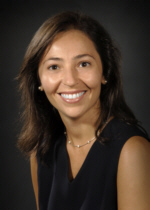
Dalilah Restrepo
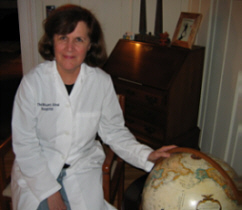
Gail Rosselot
This is the first Journal Watch in NewsShare. We hope you will find these articles beneficial to your travel medicine practice. As always, we welcome contributions from other ISTM members to this ongoing feature. Please email us with your recommendations for peer-reviewed content.
In this issue of the ISTM Journal Watch, we highlight six articles. Plasmodium vivax is responsible for more than 70% of malaria cases in the Americas. Mueller and his colleagues provide an extensive review in Lancet Infectious Diseases of our current knowledge of this parasite. Three articles annotated here address travel medicine concerns in the growing field of adventure tourism. Cogo and Fiorenzano offer guidance for patients with bronchial asthma going to high altitude in an article in High Altitude Medicine and Biology. In a different edition of that journal, Tissot van Patot and colleagues review the current literature regarding the prophylactic use of Ginko bilboa for AMS. Writing in Travel Medicine and Infectious Disease, Travis Heggie identifies health and safety risks for travelers visiting volcanoes and geothermal regions. Our fifth article, from the New England Journal of Medicine, compares the efficacy of inactivated versus live influenza vaccines. Our last article comes from Clinical Infectious Diseases and looks at the issue of hypo- and hyperglycemic effects when the fluoroquinolnes are prescribed.
Key gaps in the knowledge of Plasmodium vivax, a neglected human parasite. Mueller I, Galinski M, Baird JK, Carlton JM, Kochar DK, Alonso PL, del Portillo HA. Lancet Infectious Disease 2009; 9:555-66 P. vivax is the most widely distributed cause of malaria around the world with some 2.5 billion persons at risk each year. In this article, the authors address what they see as a seriously neglected major public health problem. This review updates our current understanding of the biology, pathogenesis, and epidemiology of P. vivax. One section includes a discussion of the growing chloroquine resistance and the role of primaquine as chemotherapy. Another section provides evidence that rejects the notation that P. vivax malaria is a relatively benign disease. Throughout the article, the authors identify crucial gaps in our understanding of this parasiteand opportunities for future research.
Bronchial asthma: Advice for patients traveling to high altitude. Cogo A and Fiorenzano G. High Altitude Medicine & Biology 2009; 10(2): 117-121 Can persons with asthma safely travel to high altitude? In this article, the authors discuss a number of issues that can help the clinician answer this question in the pre-travel setting. Among the topics addressed are: the mountain environment, adaptations of the respiratory system to high altitude, and underlying pathophysiologies of asthma. The authors provide specific recommendations (e.g., inhalers, rescue drugs, premedication, oral steroids) for travelers according to three levels of altitude - low altitude (500 to 2000m), moderate altitude (2000 to 3000m), and high altitude (3000 to 5000m).
Ginko bilboa for prevention of acute mountain sickness: Does it work? Tissot van Patot MC, Keyes LE, Leadbetter III G, Hackett PH. High Altitude Medicine & Biology 2009; 10(1): 33-43. This article reviews the current literature for the use of the non-prescriptive agent Ginko bilboa extract (GBE) for the prevention of acute mountain sickness (AMS). The authors compare studies with regard to GBE dose, composition, study design, altitude reached, ascent rate, exercise, and risk for AMS. They conclude that the variability in commercially available GBE products precludes its reliable use for AMS prevention or treatment.
The Internet abounds with information and opinion about the use of alternative products for AMS. This article looks at the scientific data and can help inform both clinicians and skeptical travelers about GBE use.
Geotourism and volcanoes: Health hazards facing tourists at volcanic and geothermal destinations. Heggie, T. Travel Medicine and Infectious Disease 2009; 7: 257-261. According to the author, in 2008, more than 7 million tourists visited volcanoes and geothermal fields in such locations as Hawaii, Yellowstone, Mount Rainier, New Zealand, Iceland, and Chile. This article reviews the potential health hazards for tourist visits to these increasingly popular destinations, including the risks of volcanic gases, blasted volcanic rock and lava, lava flows, landslides, and mudflows. Pre-travel providers and those responsible for emergency medical planning should find this article useful.
Severe dysglycemia with the fluoroquinolones: a class effect? Aspinall SL, Good CB, Jiang R, McCarren M, Dong D, Cunningham FE. Clin Infect Dis. 2009 Aug 1; 49(3): 402-8. Gatifloxacin was withdrawn from the market due to concerns of dysglycemic events. Similar events have been reported with other antibiotics of this class especially in persons with underlying diabetes. In a large cohort of outpatients at the VA Healthcare system, patients who received a prescription for a fluoroquinolone or azithromycin between October 2000 and September 2005 were identified. The outcome was a hospitalization for hypo- or hyperglycemia within 15 days of the prescription date. The final analysis included 1,352,793 outpatients (874,682 received FQ and 402,566 received azithromycin). The odds of severe hypo- and hyperglycemia were significantly greater with gatifloxacin and levofloxacin, but not ciprofloxacin, than with azithromycin. The risk of a clinically significant dysglycemic event appears to vary among the fluoroquinolone class of antibiotics and was especially relevant with underlying diabetes. This is important to keep in mind when prescribing travelers' diarrhea prophylaxis/self-treatment to our travelers with comorbidities.
Comparative efficacy of inactivated and live attenuated influenza vaccines. Monto AS, Ohmit SE, Petrie JG, Johnson E, Truscon R, Teich E, Rotthoff J, Boulton M, Victor JC. N Engl J Med. 2009 Sep 24;361(13):1260-7. The latest of this four-year effort, beginning in 2004, to answer the question of differences in efficacy between the available vaccines for influenza in adults was published. The efficacy of inactivated and live attenuated influenza vaccines in healthy adults was analyzed in this randomized, double-blind, placebo-controlled trial during the 2007-2008 winter season. A total of 1952 subjects who received vaccines during the fall of 2007 were asked to report respiratory or systemic symptoms during the following flu season. Laboratory-confirmed symptomatic influenza A was found in 119 participants (6.1%). The absolute efficacy against influenza A virus was 72% for the inactivated vaccine vs. 29% for the live attenuated vaccine. Unlike children younger than 6 years of age, for whom the live attenuated vaccine seems to be superior to the inactivated vaccine, this current data provides evidence of superior performance of the inactivated vaccine in healthy adults aged 18-49.
Regional Travel Medicine Meetings
Two important regional travel medicine conferences are scheduled for 2010, each focusing on travel medicine issues distinctive to their regions.
Travel Health Africa - Research and Reality
Many of you will recall the South African Society of Travel Medicine (SASTM) meeting held in Cape Town in 2004 and the huge success that it was. SASTM is returning to Cape Town for its next Congress, 15 - 17 October, 2010.
SASTM is privileged to have as invited guests the ISTM President-elect, Fiona Genasi, and Professor David Durrheim, a founding member of the Society. The program will explore issues pertinent to travel and health in Africa, including as a main feature a workshop that will explore the psychological impact on working in Africa. There is also the opportunity for free-paper and poster presentations.
Africa is developing rapidly. Investment opportunities are improving, brining business people. And tourists are discovering that there are many safe and interesting places to visit. Both groups of travelers bring their own challenges. The theme of the Conference will afford an opportunity to present the latest relevant disease research juxtaposed to the reality of traveling and working in Africa.
The meeting will be housed in the modern International Convention Centre which is within walking distance of the Victoria Albert Waterfront with its many attractions, activities and restaurants. The Centre is also within walking distance from many excellent hotels, boutique hotels, guest houses and self catering apartments.
Cape Town is a special city and a place where dreamers find motivation and to which you are bound to return time and again. Warmed by the African sun, the city is tamed by a soaring table-shaped mountain, set on a peninsula of towering rocky heights and thriving valleys, close to where the Indian and Atlantic Oceans meet. Boldly positioned on the international map, Cape Town offers numerous things to do and places to see. It is a place where the old and new pleasantly converge to capture the history, design, cultural pursuits and the soul of its people.
For full details about of registration and the programme, please visit www.sastm.org.za.
Protecting Travelers to and from East Asia
The 8th Conference of the Asia Pacific Travel Health Society (APTHS) - Nara, Japan - 20-23 October 2010.
Following on the very successful series of regional travel medicine conferences in the Asia-Pacific region, the APTHS is pleased to announce that the next APTHS Conference will be held in Nara, Japan in October 2010. The Conference is being organized in cooperation with the Japanese Society of Travel and Health, and the Japan National Tourism Organisation.
There will be an exciting program focussing on travel medicine issues specific to East Asia, presented by many experienced speakers from within the region. In addition, there will presentations by well-recognised travel medicine experts from other part of the world.
The conference will be held in the beautiful Nara Prefectural Public Hall, which features the Noh Theatre hall seating 500 persons. The building is set in magnificent gardens, and is a 20-minute walk from central Nara through historical parkland. Buses and taxis are also available to bring participants from a wide range of hotels in Central Nara.
Nara, an ancient capital of Japan with many fine historical features, is located east of Osaka and south of Kyoto, with both cities easily accessible by rail and bus. The weather and scenery in October is Nara are at their best, with mild temperatures, sunny days and turning leaves on the trees.
